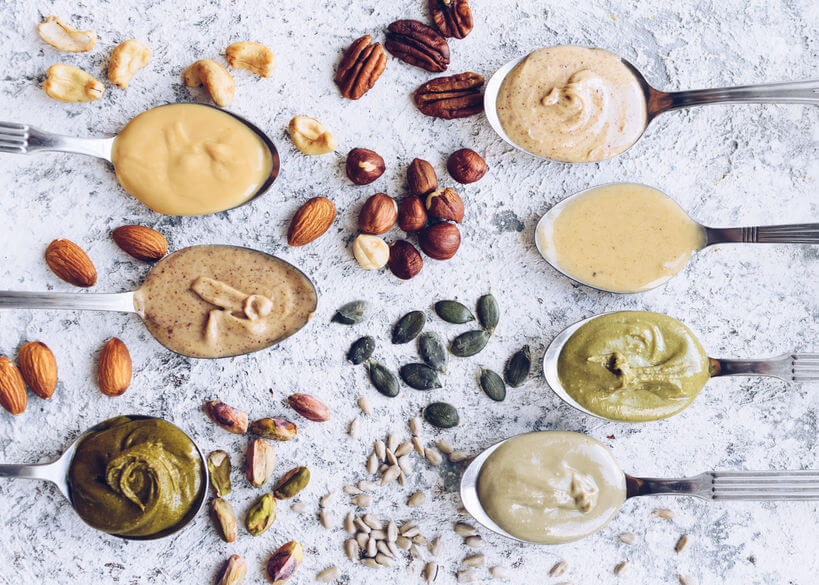Magnesium is one mineral that we hear about in relation to muscle health, but not too much for its other properties. Yet it’s one of the most abundant minerals in our bodies.
In fact, magnesium is used in hundreds of different chemical reactions in the body every single day. That means it’s in high demand so if you aren’t taking in enough there will be some warning signs popping up.
It’s tied to sugar cravings because magnesium helps regulate glucose (blood sugar) and insulin (helps the body use and store glucose). If you don’t have enough magnesium, you’re bound to see a difference in your sweet tooth.
Let’s take a closer look at how magnesium can help manage sugar cravings and how it contributes to the health of your body overall.
The Many Roles of Magnesium in the Body
Magnesium helps lower our stress levels. In fact, magnesium is often referred to as the “relaxation mineral.”
Serotonin, which is a natural mood stabilizer found mostly in our digestive system, requires magnesium for its production. Therefore, it is recommended that we take magnesium to help manage our stress, anxiety, and mood disorders. In turn, a magnesium deficiency can affect our stress level and emotional state.
Magnesium is necessary for numerous chemical reactions in our body, including making DNA.
Magnesium helps maintain brain function by relaying signals between our body and our brain. It prevents overstimulation of nerve cells, which could result in brain damage.
Magnesium helps regulate muscle contractions – it opposite to calcium to help our muscles relax. Magnesium is commonly recommended for treating muscle cramps.
Magnesium has also been linked to helping reduce the risk of many diseases, including arthritis, heart disease, and diabetes. Several studies have shown that migraine headaches are associated with low levels of magnesium.
Magnesium is used in the regulation of blood sugar, insulin and dopamine which makes it an essential mineral for managing sugar cravings.
Despite magnesium being so abundant in our body, a lot of people don’t get enough of it.
How Much Magnesium Should We Consume?
Adult men should consume 420 mg/day.
Adult women should consume 320 mg/day.
There could be consequences from consuming too much magnesium or not enough magnesium:
- Too much magnesium can cause various symptoms, including diarrhea, nausea, vomiting, lethargy, and irregular heartbeat.
Therefore, you might not want to take a supplement that contains magnesium if you are already getting enough magnesium through your food and other sources.
- A magnesium deficiency (called hypomagnesemia) could lead to various health conditions, including muscle twitches and cramps, osteoporosis, fatigue, high blood pressure, asthma, heart disease, and diabetes.
It’s more than likely that you sit somewhere in the middle of these two. A low level of magnesium can increase sugar cravings, especially for chocolate.
Other mild deficiency symptoms could include constipation, tight muscles, high stress levels, difficulty sleeping, clenching teeth at night and more.
Foods That Contain Magnesium
If you think low magnesium is playing a role in your sugar cravings, there are plenty of magnesium-rich natural foods you can add to your diet:
- Pumpkin seeds (check out the recipe below for making Sweet & Creamy Pumpkin Seed Butter)
- Raw almonds and cashews (raw nuts are better than roasted nuts – roasted nuts lose magnesium during the roasting process)
- Dark chocolate
- Black beans, peas, and soybeans
- Green leafy vegetables (spinach)
- Whole grains (oat bran)
- Herbs (coriander, chives, dill, sage)
Magnesium can also be absorbed through the skin. An Epsom salt bath can increase your magnesium level, as can a magnesium oil or lotion.
If you’re looking to supplement with magnesium, start with 150 mg of Magnesium Bisglycinate per day. It can be especially helpful for women to take magnesium around the time of their period to add some magnesium to help their bodies manage blood sugar more efficiently.
Summary
Eating sweets occasionally isn’t a bad thing. If your sugar cravings are taking over your life it can mean that your body is looking for something, like magnesium. A lot of people are deficient in magnesium because it’s used widely in the body for so many processes.
There are several ways to get your recommended amount of magnesium. One of the easiest (and yummiest) ways of getting daily magnesium is to include plenty of food sources. Here’s a recipe for pumpkin seed butter to get you started.
Recipe
Sweet & Creamy Pumpkin Seed Butter

Ingredients:
2 cups raw pumpkin seeds
1-2 tsp. oil (grapeseed or olive)
1 Tbsp. honey (optional)
¼ tsp sea salt
Preparation:
- Preheat oven to 350 degrees.
- Spread the pumpkin seeds on a baking sheet.
- Bake for 10-12 minutes, until lightly golden.
- Cool for 15-20 minutes.
- Put the pumpkin seeds, honey and salt in a blender or food processor.
- Run the food processor for approximately 4-5 minutes, until the pumpkin seeds begin to have the texture of butter. If necessary, stop the food processor and scrape the sides.
- Continue running the food processor for another 2-5 minutes until the pumpkin seeds have the texture of butter. Add some of the oil, as needed, until the desired consistency is reached.
REFERENCES:


